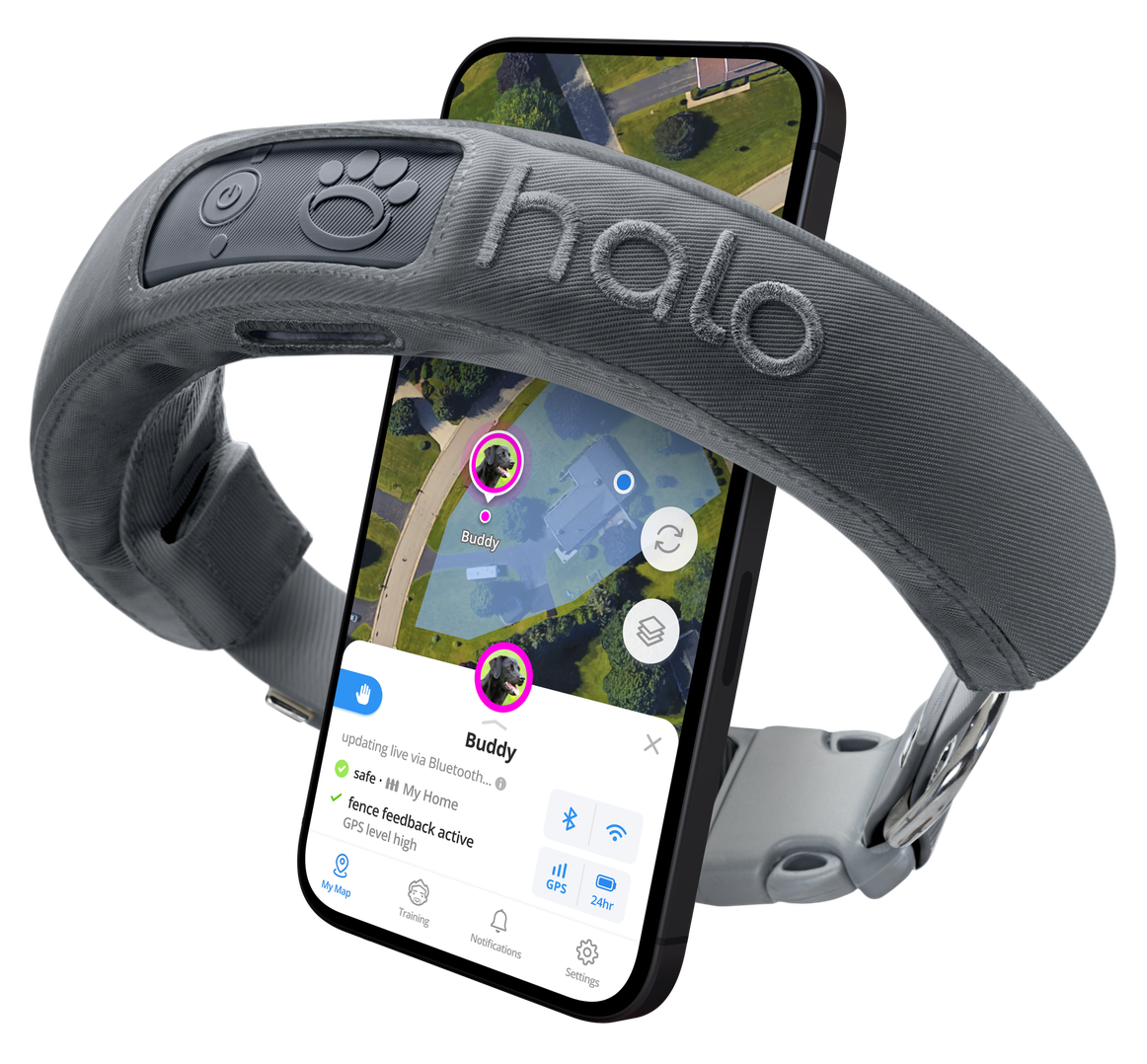In early June, I wrote a story about a connected dog collar called the Halo Collar. The $699 “internet of things” device uses Wi-Fi and GPS technologies in creating a virtual fence around a person’s dogs. Halo Collar co-founder Ken Ehrman, alongside brother Michael, wanted to build a product that not only keeps the animal safe, but makes caring for the animal(s) more accessible to the human. The Halo Collar is protecting over 150,000 dogs, and has been evangelized by celebrities such as Ashlee Simpson, Mario Lopez, and the D’Amelio family.
In an interview at the time, Ken explained to me he and brother Michael were motivated to “use our technological expertise to support our mission of saving dogs’ lives and allowing them to be safe off-leash.”
Earlier this month, I sat down with Michael to discuss the all-new third-generation Halo Collar 3. In a press release issued today, the new version is described as “the most accurate GPS dog fence ever created” due to its heavy reliance on artificial intelligence technology. According to Ehrman, the new Halo Collar incorporates AI-based software that utilizes GPS signals from outer space and analyzes data from direct line-of-sight signals. The new methodology allows the collar to have “much higher degrees of accuracy simply through software feature embedded within the Halo Collar itself using artificial intelligence.” The team has coined the hallmark feature of the upgraded device PrecisionGPS. The new technology is important, Ehrman said, because dogs naturally like to move about their surroundings; as such, signals can bounce around depending on where the dog goes. “It’s [the PrecisionGPS tech] something that’s very unique to Halo,” Ehrman said. “It’s the only product on the market that has it, and we’re very excited about that.”
Besides the substantially more accurate location technology, the Halo Collar 3 also features better battery life, support for cellular technology, a new magnetic charging cable, and comes in some new colors.
As I wrote in my initial coverage of the Halo Collar, the product’s relevancy to disability and assistive tech is easy to glean upon deeper examination. In our interview, Ken shared an anecdote about his elderly mother benefitting from the device because it makes watching her dogs more accessible. A literal fence is an accessibility aid in this sense as well; the salient point is the Halo Collar’s virtual fencing technology makes it such that she needn’t engage in a foot chase if a dog ran away. Instead, she can rely on her phone to track the dog’s whereabouts—saving her from a physical excursion she may not be able to handle.
The biggest selling point of the new collar, which Ehrman said has been in development for over a year, is the more precise location information. The Halo Collar 3 has undergone a “significant amount of testing” during the development process, Ehrman told me. In addition to increased performance overall, Ehrman explained a goal was to have the collar perform well on different types of dogs and their body types.
“No matter how your dog wore its collar, we wanted the use of the product to be less reliant on the positioning of the collar on your dog,” Ehrman said. “We spent a lot of time in particular testing the GPS performance, testing the antenna performance, not just in a lab environment or in our hand, but on a variety of dogs. This took a while for us to do and get right. We had to actually redesign some elements of the antenna and how it’s mounted inside the device to get it just right.”
A significant portion of the development cycle for the Halo Collar 3 was giving customers prototypes to use in real-world testing. Ehrman called this field testing “invaluable” and gives the team an opportunity to observe performance based on real life scenarios. Giving customers access to the new model was “very important,” he added. “We want our customers to start using it in their real customer use environments—that gives us an opportunity to observe the performance,” Ehrman said. “For the last several months, a variety of customers been getting free upgrades to Halo 3 so that we could make sure that everything would go perfectly when we launched with general release to the public.”
Asked about the future, Ehrman said the team is “very heavily invested in continuing to stay far ahead of the competition” in the smart collar space, adding there’s “constant investment” in research and development of hardware and software, the latter of which is delivered via over-the-air updates. Ehrman likened the Halo Collar as a “smartphone for your dog.” It’s “a platform your dog is wearing.”
“We can continue to layer on more and more features and functions over time, and you’ll get those through over-the-air updates,” he said. “We’re very committed to our roadmap. We have an amazing roadmap of great features and functions, so investing in a Halo today isn’t just getting the product of today; it’s getting the product of today plus all these advancements that are coming down the line. It’s an investment in the future, it’s a different way to look at smart pet products or any pet product—it’s not just a commodity. It’s a platform your dog wears that will continue to grow. It’s what it can do for you and how it changes your life. Our goal is to keep dogs free and safe, and at the same time, give you the owner peace of mind to let you do things with your dog that you never could do before. There’s so many additional ways we can do that—we continue to work on and give our customers updates over time.”
Read the full article here





